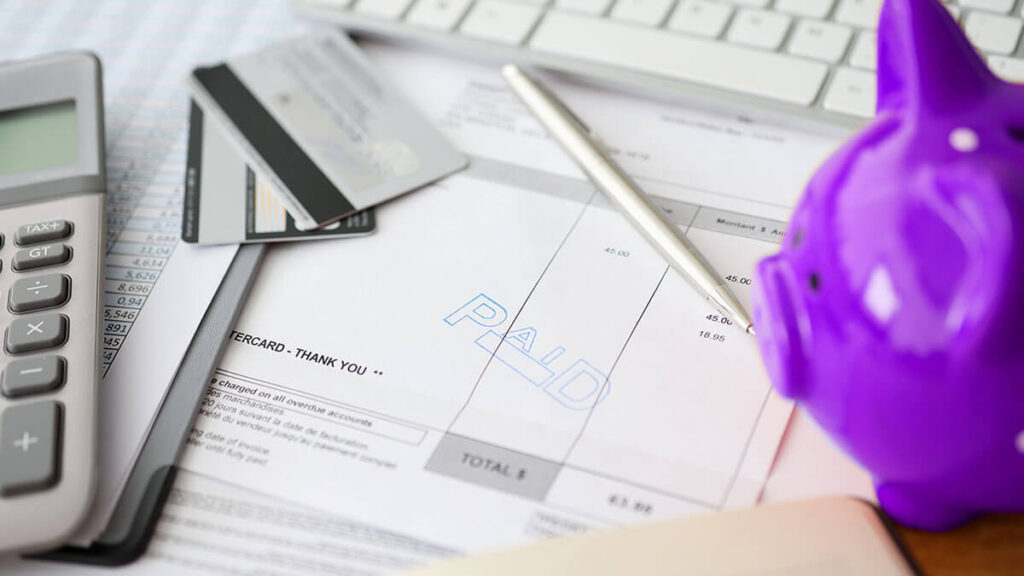When you extend credit to customers, you deal with something called accounts receivable. To ensure your company gets paid and your books are all up-to-date, you need to have a solid accounts receivable process in place. Here’s your step-by-step guide on accounts receivable processes and procedures to live by.
Accounts receivable overview
What are accounts receivable? Accounts receivable (AR) is money customers owe your business, typically from a sale on credit. Entries in your AR are receivables, and these represent outstanding invoices in your books.
Accounts receivable can include:
- Unpaid or outstanding invoices
- Sales issued on a credit card to be paid at a later date
- Money you expect from customers
- Late payments from customers
For example, you would have accounts receivable if you invoice a customer for a sale on credit, and they pay at a later date.
What is the accounts receivable process?
The accounts receivable process helps you collect money owed to you from customers. The process includes a series of steps, starting from the sale and ending with accounting for AR in your books (and hopefully receiving payments from customers).
Having a solid accounts receivable collection process allows your business to bring in cash before invoices are past due or become bad debts. In turn, this helps your cash flow stay healthy and boosts business profitability and growth.
Accounts receivable process: 4 Steps
The accounts receivable workflow process is similar at each company. Typically, it boils down to four simple steps:
- Establish credit policies
- Invoice customers
- Track and monitor accounts receivable
- Account for accounts receivable
Ready to learn how to handle your accounts receivable like a pro and get paid by customers? If so, keep reading.
1. Establish credit policies
To weed out customers who won’t pay you, you need to establish and enforce credit policies. If you need to set up a policy, make sure you determine the following:
- Who can qualify for credit
- Amount of credit you want to extend to customers
- Payment time period (e.g., payment due within 30 days)
- If you want to offer early payment discounts and the amount if you plan to offer it
- Late payment fees
- Credit conditions that are specific to your business or industry
- Other terms and conditions
When a customer agrees to pay for something on credit, you can run a credit check to determine if they’re credit-worthy. You can also have them sign an agreement promising they will pay you back if they purchase something on credit.
2. Invoice customers
Once a customer purchases a good or service and agrees to pay you back at a later date, you can send them an invoice.
Your invoice should detail the following:
- Invoice date
- Invoice number, if applicable
- Due date
- Product or service information (e.g., quantity and price of each)
- Sales tax, if applicable
- Discounts, if applicable
- Any additional comments and notes
- Your contact information
- Payment information (e.g., how to pay, payment types you accept, etc.)
- Late fees if the invoice is not paid on time, if applicable
- Early payment discount information, if applicable
Your invoice payment terms should be clear as day for your customers. That way, they know exactly how much they owe, when payment is due, and the consequences of late payments.
Depending on your business’s preferences, you can either send a paper or an electronic invoice. If you use accounting software, you can streamline the process of sending electronic invoices and receiving customer payments.
3. Track and monitor accounts receivable
Once your customers agree to pay you back later, you have to make sure they actually follow through with that promise.
Track and monitor your accounts receivable for each customer who owes you. You should keep an organized list of the following for each customer:
- Customer name
- Total balance owed
- Current amount
- Days past due, if applicable
To simplify this process and make it less difficult, you can use accounting software to create and view an accounts receivable aging report. An AR aging report tells you which customers have outstanding invoices. And, some software can even help you reach out to customers for late payments with automatic payment reminders.
If you’re handling things manually, make sure to follow up with customers when their payments are past due. You can manually send payment reminders in bulk or contact customers individually. If you can’t get a customer to pay, you may need to resort to hiring a collection agency.
4. Account for accounts receivable
To finish off the accounts receivable business processes, you need to record accounts receivable in your books. This includes recording payments of invoices.
Record each incoming payment in your books accordingly. During this step of the process, you should also update your balance sheet, make adjustments for any bad debts, and account for unpaid invoices.
Update accounts receivable on a regular basis (e.g., monthly) to ensure your books are as accurate as possible.
Ready to make your accounts receivable process a breeze? Follow a few tips
Fine-tuning your accounts receivable process is a must, especially if you want your business to get paid in a timely manner.
To make your accounts receivable process a snap, consider following these few tips:
- Have an organized system to track and monitor AR
- Prioritize high-value accounts
- Automate processes whenever possible (e.g., use accounting software)
- Record AR in your books regularly
- Set reminders to reach out to late-paying customers
- Ensure your credit terms are as clear as possible
- Incentivize customers with early payment discounts
- Give your customers more than one way to pay (e.g., credit card, cash, check, etc.)
The more accounts receivable process improvement ideas you take advantage of, the (hopefully) more quickly you will receive customer payments and fill your pockets.
This is not intended as legal advice; for more information, please click here.